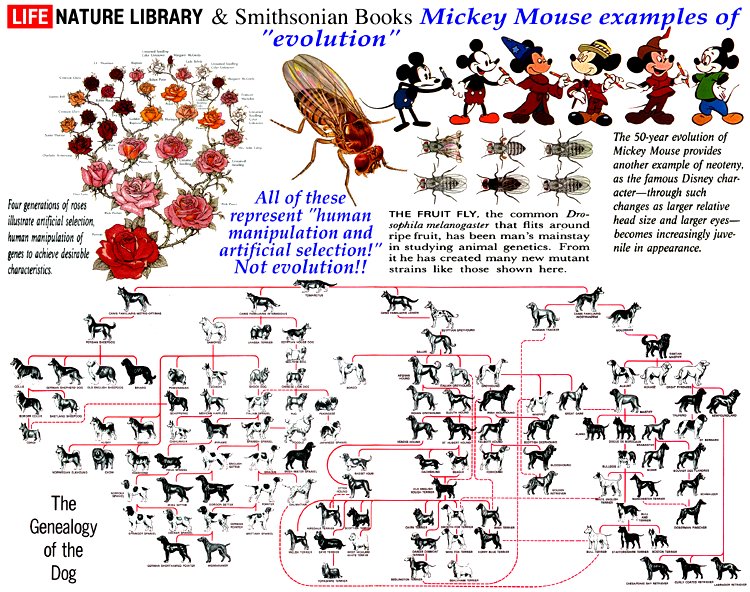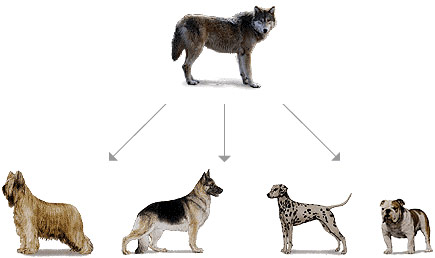Directional selection is a mode of natural selection in a phenotype that is single and favored. Making the allele frequency continuously move in one direction. Stabilizing selection also know as ambidirectional selection a type of natural selection where genetic diversity is decreased because the population slowly stabilized on a particular trait value. Another name for disruptive selection is diversifying selection, this is because it describes the changes in the populations genetics where extreme values for a trait are favored over intermediate values. Unlike stabilizing selection, disruptive selection the varity of the trait is increased and the population divides into tow distinct groups. To make the distinction between the three types of selections, here is an example of stabilizing selection. The weight of a newborn human if too light lose heat rapidly and tend to get infectious diseases. It also works the other way around, if the baby is too heavy they endanger not only themselves but also their mothers when passing through the birth canal. To help stabilize the birth weights a small range of birth weights had been selected to assure the stabilization. A good example for directional selection is the breeding of the greyhound dog. Breeders had selected from a group of hounds that were the fastest and then from their offsprings they selected again the fasted hound. It soon became a dog who could run up to 64km. The fur color of rabbits is a good example for disruptive selection. This rabbit has a incomplete dominance between white and black, now if the rabbit was to live in a enviorment with black and white rocks then the rabbits that would survive would be the black and white furred rabbits. However the gray furred rabbits that stand out and are unable to blend into their enviorment would be likely eaten which is when disruptive selection comes in. To ensure the species survival the selection allows only black and white fur to be showed but not the gray since it would decrease the species rate of survival.
Thursday, February 24, 2011
Blog #3 Microevolution
 Microevolution is the change in the gene frequency within a population or species. Microevolution occurs in four different ways. The first way is mutation, next is natural selection or artificial selection. In addition another process is gene flow and a genetic drift. Microevolution is the result from small specific genetic changes that can lead to a new subspecies. Microevolution occurs usually when there is a environmental change. It occurs so that a species has some differences or sometimes creating a new species. This is because the environment is changing so the species need to adapt along with the changing climate. In the movie the Future is Wild the modern day animals evolve into a different animal completely so that they can survive in the changed climate and environment. answers.yahoo.com/question/index?qid=20090920160125AA1tK3Uhttp://en.wikipedia.org/wiki/Genetic_variation
Microevolution is the change in the gene frequency within a population or species. Microevolution occurs in four different ways. The first way is mutation, next is natural selection or artificial selection. In addition another process is gene flow and a genetic drift. Microevolution is the result from small specific genetic changes that can lead to a new subspecies. Microevolution occurs usually when there is a environmental change. It occurs so that a species has some differences or sometimes creating a new species. This is because the environment is changing so the species need to adapt along with the changing climate. In the movie the Future is Wild the modern day animals evolve into a different animal completely so that they can survive in the changed climate and environment. answers.yahoo.com/question/index?qid=20090920160125AA1tK3Uhttp://en.wikipedia.org/wiki/Genetic_variationhttp://en.wikipedia.org/wiki/Microevolution
Thursday, February 17, 2011
Blog #2 Fossil Records
 Fossil records tend to hard to interpret because they are vague. A fossil can only form if the organism or animal had a skeletal body. If the organism doesnt have a skeletal body then there wouldn't be a fossil since the parts that form a fossil are usually the bones or hard and solid parts of the body that dont decompose over time. Also many things that happen in nature can damage the fossil making the record incomplete, and though it still gives us some information about the creatures that existed on earth long before us sometimes it is useless. This makes fossil records are hard to explain because so many of the other fossils are lost or have been erased from the face of the earth by erosion and even becoming the sediments. Not only that fossil dont give us that much information about the organism. Fossils give us information about what the organism may of looked like as in shape and size but how about what color their skin or fur looked like? Fossils have no way of telling us about that. In addition there is also that problem of whether the fossil is real or not. Whether the fossil has reached all the requirements of being a fossil, like being old enough.
Fossil records tend to hard to interpret because they are vague. A fossil can only form if the organism or animal had a skeletal body. If the organism doesnt have a skeletal body then there wouldn't be a fossil since the parts that form a fossil are usually the bones or hard and solid parts of the body that dont decompose over time. Also many things that happen in nature can damage the fossil making the record incomplete, and though it still gives us some information about the creatures that existed on earth long before us sometimes it is useless. This makes fossil records are hard to explain because so many of the other fossils are lost or have been erased from the face of the earth by erosion and even becoming the sediments. Not only that fossil dont give us that much information about the organism. Fossils give us information about what the organism may of looked like as in shape and size but how about what color their skin or fur looked like? Fossils have no way of telling us about that. In addition there is also that problem of whether the fossil is real or not. Whether the fossil has reached all the requirements of being a fossil, like being old enough.http://en.wikipedia.org/wiki/Fossil
http://answers.yahoo.com/question/index?qid=20080312052712AASeKXV
http://hoopermuseum.earthsci.carleton.ca/evolution/g.html
Thursday, February 3, 2011
Blog # 1 Theory
The main reason Evolution isn't a law is because it cannot be repeated and get the real results. Evolution is the change over time. In this case evolution changes an orgainism such as a finch. The finche's beakes changed over a time period so that it could survive more easily in the changed enviorment. Evolution happens to orgainism and animals because of an enviormental change like a decrease in food or maybe an earthquake. Mostly its because the normal cycle for an animal or orgainism had changed so it has to adapt or die out. This process is called natural selection-change so that a species wouldnt die out. Another
reason evolution isn't a law because it hasn't been observed and still hasn't been able to be proved. http://en.wikipedia.org/wiki/Evolution
http://www.darwins-theory-of-evolution.com/
reason evolution isn't a law because it hasn't been observed and still hasn't been able to be proved. http://en.wikipedia.org/wiki/Evolution
http://www.darwins-theory-of-evolution.com/
Subscribe to:
Posts (Atom)









